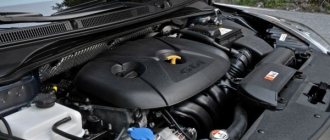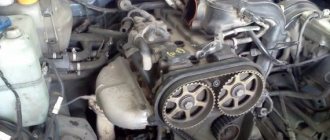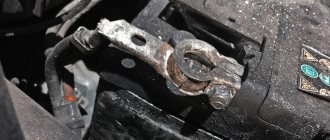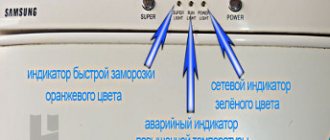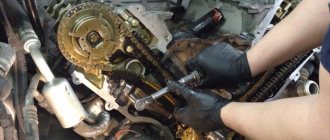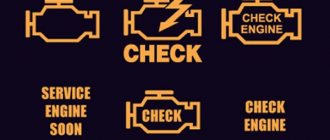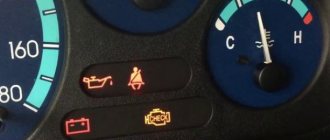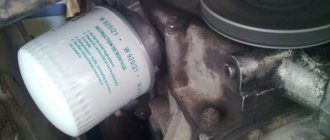Tell us your funny story too.
This instruction is intended to help you if you have a grant, especially on a robot, and your stop lights and interior lighting have stopped working:
You know, they say that those who buy a Lada/VAZ will be able to drive any car. Nowadays everything is completely different. This is acceptable for any old car, which cannot be said about a new one. I even get along. It is unlikely that you will learn how it works or how to repair a unit or component in your car if it is a Granta or Vesta, or maybe an X-Ray. Why am I, the owner of a 203 Mercedes body, even if it’s 2001? know more than the owner of a Lada Granta? ))
This is a controversial, rhetorical and mood-lifting question. No fuss! Maybe because it has 20,000 km on it so far? Probably because I love my car, I don’t treat it as a consumer, not as a rider, but I constantly tinker with it and do something.
Thus, we have a little experience, logic, forums, and putting it all together with our brains, we come to the only correct decision, excluding errors along the way and deliberately discarded dubious options. Before we begin, I will prepare you a little. After all, the situation is simple and you probably already understood what happened. Perhaps you already have several options in your head, one of which is correct or you don’t know, but don’t despair, everything will come. in the meantime, I am writing this for you.
It started when a friend told Staz that his friend’s car had broken down. The symptoms are described: his lights and stops don’t light up, the car slows down, it creates pressure, but she doesn’t understand that it’s braking and the robot doesn’t allow him to either shift into gear or something similar. I'm far from a robot yet. There is still no desire to study its operating principle. It all happened after washing it in the garage, where he left it because he couldn’t leave (later I’ll explain the joke and the guess of the culprit).
Let's go take a look, open the fuse box diagram on your phone since there's a dick on the casing and figure out what's responsible for what. I didn’t learn to read hieroglyphs; I understand human language better. When you see as many pictures as there are on the casing hiding the fuses, you start to stutter. F25 fuse and a friend has already looked at it. He obviously wasn’t there and there were no contacts there. That is, the spare fuse is not included there...
For a few seconds the option was suggested that it was a frog (stop switch), but was dismissed due to the interior lighting, and I bent down and checked that the frog was walking properly. “We dance” from our predecessors. The signaling system is installed, from the interior, maybe AvtoVAZ changes the circuit when signaling? Having crawled under the hood, in the legs, around the steering wheel, nothing of the kind was found. Only a signaling unit and 1 collective farm wire.
Well, ok, the service will sort it out. We went back and forth on business until the evening, but the desire to win was there. Gambling attraction. It's either me or you.
What do you think? Upon arrival in the evening, the problem was solved in half an hour. After all, 25 before was definitely supposed to be responsible for this, but he wasn’t there, which means he was either moved or someone is replacing him. We bring a flashlight to each preset (and they are stupid, like MINI, and also not transparent)
without pulling them out and the culprit is found.
Causes of malfunction
The main reasons for this malfunction are:
- defective or burnt out light bulb;
- break in electrical wiring or plug connections;
- fuse blown due to a short circuit or overload in the on-board network;
- limit switch malfunction;
- problems with electronic systems or units.
Such malfunctions can usually occur on high-mileage vehicles. However, there are exceptions.
What is a relay and its purpose on a car
An element such as a relay on a Lanos, Sense and Chance car is designed to close and open electrical circuits. In simple terms, these devices supply power to powerful electrical appliances through small buttons.
If you do not use a relay, and, for example, start the engine directly, then the contacts in the ignition switch will immediately burn out or the button will melt. This is due to the fact that when starting the engine, the starter consumes a very large current, which, when passing through the ignition switch contacts, would melt them.
To avoid making the on and off buttons massive, relays are used in cars. These are a kind of protective devices that divide the circuit into high-voltage and low-voltage. The devices have a simple design, and their main element is a coil with a winding. When using a relay, it is important to understand the purpose of its contacts:
- 85 and 86 - coil contacts
- 30 - common, which is supplied with constant power from the battery
- 87 - normally open contact or power supply to the receiver
- 87a - normally closed contact, which is also called additional
When replacing a relay, it is important to pay attention to which element was previously in the socket - three, four or five-pin. Replace only with a device of similar design.
Brake lights don't come on completely
If the brake lights on the car stop lighting completely, then you should look for a break in the wires, in the limit switch or a faulty fuse. The search for a breakdown should begin with the fuse box. On its cover there is usually a table showing which circuit is protected by which fuse link. If it is missing or the information in it is unreadable, you can use the owner's manual for the vehicle.
If the required fuse has blown, it cannot be replaced until the cause is determined. This usually happens when there is a short circuit or the insulation of the wires is damaged and they touch the housing. A similar effect is observed when water gets into electrical connections. In this case, it is necessary to dry the area where moisture has entered. To speed up the process, you can use a hair dryer (being careful not to melt the wire insulation or sheathing elements). Then you need to remove the fuse from the holder and test the circuit after it with a multimeter.
Fuses and relays in the interior of Lanos
Fuse box
It is located on the left pillar, near the door.
The back of the protective cover provides the exact fuse locations for your vehicle.
Scheme
Decoding
F1 (10A) - Luggage lamp, interior lamp, fog lamp in the left rear light, antenna drive motor.
F2 (10A) - Light switch in the left steering column switch, fog light switch in the left rear lamp, headlight beam direction control, open door indicator.
F3 (15A) - Alarm.
F4 (15A) - Central locking.
F5 (10A) - Power supply circuits for the Chevrolet Lanos engine control unit from the battery.
F6 (10A) - Audio system power supply circuit from the battery.
F7 (15A) - Brake signal/side light lamps in the rear lights (brake signals) of a Chevrolet Lanos.
D8 (diode) - Door open warning switch (driver's door).
F9 (10A) - Audio system power supply circuit from the ignition switch.
F10 (15A) - Cigarette lighter.
F11 (10A) - Instruments and signaling devices in the instrument cluster (except for fog lights, direction indicators and open door), clock, glove box lighting lamp.
F12 (10A) - Reversing lamp in the right rear lamp.
F13 (15A) - Airbag.
F14 (15A) - Excitation of the generator, injectors, vehicle speed sensor, canister purge valve, exhaust gas recirculation valve, phase sensor.
F15 (15A) - Ignition coil for Chevrolet Lanos.
F16 (15A) - Direction indicator lamps in the headlights, direction indicator lamps in the rear lights, electric drive of the right outside rear view mirror.
F17 (15A) - Power supply circuits of the engine control unit and fuel pump relay from the ignition switch.
F18 (20A) - Windshield wiper electric motor, windshield washer pump electric motor.
F19 (10A) - Windings of the rear window defroster relay, air conditioning compressor relay, power window relay, relays (K4, K8, K11) of the cooling system fan motors.
F20 (20A) - Heater fan electric motor (1st, 2nd and 3rd speeds).
Fuse number 10 is responsible for the cigarette lighter.
Relay block
In the cabin there is a relay unit consisting of four elements. It is located behind the headlight dimmer cover.
Scheme
Designation
- Fog lamp;
- Heater fan speed relay 4;
- Windshield wiper intermittent relay;
- Alarm.
Separate brake light does not light up
If only one brake light does not light, then the most likely problem is the lamp or poor contact in the socket. In this case, you need to disassemble the trunk trim on the side of the car where the signal is not lit. If necessary, remove the lamp unit, remove them from the sockets or holders, carefully inspect the contacts in the socket and on the lamp base.
The presence of rust, traces of oxidation (white or greenish coating), soot, as well as dust or moisture confirms that the brake light does not light due to missing or poor contact in the circuit. Cleaning the indicated areas will help eliminate the problem. To remove rust and oxides, you will need a sharp object, such as a screwdriver. It is also necessary to check the serviceability of the lamp. To do this, you can use a multimeter or the on-board voltage supplied to the lamp via wires through a fuse. The burnt-out lamp is replaced with a similar new one.
Methods for troubleshooting
Troubleshooting is not a complicated process and even novice car enthusiasts can do it (the author of the video is Avtoelektika VC).
Using a multimeter, you need to test the wiring. Damaged or torn sections should be replaced intact or soldered. If there are traces of oxidation processes on the contacts, they need to be cleaned.
If the LEDs burn out, they need to be replaced in pairs. If the breaker fails, it must be replaced with a new one, as it cannot be repaired. Before replacing, turn off the vehicle's power by removing the negative terminal from the battery. Then disconnect the power wires from the breaker. Next, you need to loosen the lock nut and unscrew the main nut securing the switch to the bracket.
Replacing the brake light switch
Before installation, the new frog should be checked for functionality. This can be done using an ohmmeter. We connect the device to the device and measure the resistance. When the contact is closed, the resistance should be zero. If you press the rod, the contacts should open; the resistance in this case tends to infinity.
The additional brake light does not light up
If the additional brake light does not light up, this indicates a break in its wires or an unreliable connection. It usually connects to one of the stock brake light sockets. It is necessary to ensure that the wires are securely fastened and that there are no signs of oxidation.
If they are present, it is necessary to cut off the damaged end of the wire, clean it again and connect it to the socket. If the cable is broken in another place, it is advisable to install a new one. In this case, it is better to use a thicker wire (to avoid recurrence of the malfunction).
Fuse box in the car interior on the left under the trim
The interior fuse box of Lanos, Sens and Chance is responsible for protecting various electrical equipment. There are 20 fuses located on this block in the passenger compartment. Let's look at their purpose in detail.
The table below provides not only a description of the purpose of each element, but also the maximum current value. When searching for or replacing cabin fuses on a Lanos, you must rely on the data from the table.
Fuse F2 is responsible for turning off the rear PTF lamps. It also protects the power supply circuit for the headlight range control and the door open alarm. F5 - protects the power supply circuit of the vehicle's ECU. The power cable comes directly from the battery. Fuse F8 on the block is responsible for supplying power to the light alarm on the driver's door. Element F13 is responsible for the proper operation of the airbags. F15 - supply voltage to the coil or ignition module. F20 - battery for the electric heater motor for speeds 1-3.
Car alternator malfunction
LED lamps are very sensitive to voltage surges in the on-board network (along with this, the current through the LEDs increases, which leads to their destruction). The voltage may increase if the generator components (namely the stabilizer) are faulty. This is especially common on domestic cars due to the lower quality of component production compared to more well-known brands.
Therefore, if the brake light on a VAZ 2114 or another model does not light up (provided that LED lamps are used), you should also check the generator and replace the damaged element, then change the lamp.
Such a malfunction can occur periodically and is associated with wear and tear of the entire generator. If the brake lights on the VAZ 2115 do not light up and other breakdowns often occur, you should also think about replacing it with a more reliable car (in some cases, this is more profitable than constantly investing money in endless repairs).
Jabot report
Hello dear friend) Happy holiday and all the best for the new year)
This post will contain a lot of text and pictures, but if you get through it and read it all to the end, you will be shocked, at least I still don’t understand how this can be so...
It all started with the fact that, standing at a traffic light, a guy in a Renault Twingo caught up with me and honked, lowering the window, the following dialogue took place: me: a bit rude
What do you need?
(because usually nothing good happens after such an algorithm of actions) him: buddy, your feet aren’t working me: wow, at all? none?: him: no, not at all. Be careful, they might fly me: thank you very much, I’ll be attentive, all the best he: be there How long did I travel without stopping? a day? a week? a month?
Unknown. But the fact is that this is the only person who told me, for which I thank him very much. Perhaps he saved my car, or even my life. I wish there were more people like this on the road. Well, it doesn’t matter, I thought, some kind of stops, nothing difficult, I’ll get there now and quickly fix everything, the main thing is to get there. How wrong I was in thinking that way.
The next morning after work I went to check the light bulbs, opened the left headlight and saw that the lamp was intact, strange, I thought
. I opened the second lantern, but even here the lamp turned out to be intact. I had spare light elements lying around and I decided to change both of them just in case, suddenly there were hidden defects, but as expected, a miracle did not happen, the feet did not light up. Let's move on, since the lamps are intact, it means the fuse. I checked and he was also unharmed. The last option left is the brake pedal limit switch, or simply a frog. I had no doubts about his involvement in what was happening, since for a long time he had been gradually slowing down, this was noticeable by the activation of the automatic transmission lock. Without even understanding it, I went and bought a new frog, since the old one was slowing down, it definitely wouldn’t be superfluous, in any case. I pulled out the limit switch, everything is extremely simple, it is located right above the brake pedal, rotate it counterclockwise and pull it towards you, disconnect the block, that’s it.
I bought a new one and put it back in the reverse order.
Already in anticipation of victory, I start the car, press the brake and... nothing happens, the brake lights don’t light up. At that moment, notes of anxiety ran through my soul.
I immediately grab a multimeter and start ringing. First I called the frog.
There are four contacts on it, since the car is equipped with an automatic transmission; on a manual transmission there are only two contacts. All four wires are positive and work in pairs. The first pair is contacts No. 1 and No. 2. Yellow with brown stripe and orange with brown stripe wires. The second pair is red and yellow wires.
The first two are responsible for activating the brake lights, the second ones for blocking the automatic transmission selector. But they work a little differently. The first pair is triggered when the brake pedal is pressed, that is, the limit switch rod is pulled out. The second pair is the opposite, when the pedal is released, that is, the circuit is constantly energized, and when we press the pedal, it opens. Both yellow wires are permanent positives, red and orange, respectively, dependent.
The test results showed that the frog was working properly, the signal both came and went out of it. At the input and output, the tester showed 14.2 volts, which is very good.
And now the fun begins, the moment of the stop light rings. Unfortunately, I didn’t take a photo of the cartridge, but I think everyone can imagine what it looks like. An ordinary single-contact base, where the body of the light bulb is ground, and the contact group at the bottom is a plus. And in the cartridge itself, the walls - the mass and the tab on the bottom should transmit a positive signal when the brake pedal is pressed. But on this very foot there is no tension either in the pressed position of the pedal or in the released position. This means the signal was lost somewhere along the way from the limit switch to the lights. And for some reason I decided to check if there was any mass on this paw, after which I fell into a final stupor. It turned out that instead of a plus there is a minus on it, and on the walls there is also a minus. But it only comes when the brake pedal is pressed, when it is not touched, there is no signal at all, no signal at all. It turns out that the plus does not disappear along the way, but turns into a minus. This turn of events just doesn’t fit in my head (and I still can’t understand why this is happening)
The day was already coming to an end, it got dark and I began to study the diagrams, postponing practice until tomorrow. But as it turned out, there are almost no normal schemes in the public domain for our car. They are all either cut down, or incorrect, or for the first phase. I turned to the almighty elder vectrovod for advice. Apparently, this magic also interested him and he began to search for the correct power supply circuits. In the meantime, I discussed this issue with my father, and we came to the conclusion that the only logical explanation for this phenomenon is the presence of a certain relay in the circuit that has closed or malfunctioned and is now transmitting a minus to the circuit instead of a plus. I shared my thoughts with Roman and yes, he actually supported this theory with a diagram that shows a relay in the brake light circuit. It seemed that the solution was very close. In the diagram it is located here, element number 1524. And in the cabin the relay is located here
Its location upset me a little, since most likely the dashboard would have to be removed to replace it, but that’s okay, I went in search of this relay. And to my surprise, I found nothing there. There is no relay in this place. When checking the stops, I accidentally burned out the previous dimensions, so I went to change them, and this story deserves a separate post and a bunch of swear words, the one who changed these fuses understands what I mean. And so the day came to an end, it was decided to continue tomorrow.
The next day, I again sat down to study the theory, electrical circuits, location of components, etc. It turns out that it’s not for nothing that they don’t like Megan electrics so much, because here the devil will break his leg. I found the only normal scheme on the renoclub forum. Some very good person gave a link to download a 41 GB archive from a root tracker. Of course, we all know that this resource is prohibited in Russia, so getting this archive was not so easy. But I did it. The archive contains a disk with official diagrams. It contains a complete list of all Renault Megane 2 schemes, of which there turned out to be sooooo many. Each modification, each motor has its own diagram, I didn’t unpack everything, but there are definitely more than ten of them. Basically everything for the first phase. On the second there were only two of them. Here are their names 1. Megane II X84_NT8445_Visu v5.0_2007.11.19 2. Megane II X84_NT8446_Visu v5.0_2007.11.19 Upon studying them in detail, it turned out that there can be two brake light circuit diagrams in the second Megane of the second phase for the sedan body. I attached the first option above, it is characterized by the presence of a relay and is valid if the car has a stability control system. It is not provided in my configuration, so the following diagram is relevant for me. Here we see that power comes to the fuses, then to the frog, then there is a branching. One wire goes to the ABS block (number 118 on the diagram), the second wire to the switching unit (number 645 on the diagram) and the third wire goes straight to the feet through connector R2. That is, the signal has nowhere to get lost on the way from the frog to the feet.
Most likely, the circuit is connected to the switching unit in order to send a signal to the ignition, because the car can only be started when the brake pedal is pressed. The ABS unit, as I assume, is here to control the light alarm in case of emergency braking. Maybe it will be news to you, just like it was to me. But in our car, as in all modern smart foreign cars, during emergency braking, the brake lights first pulse with five bright flashes, plus the emergency lights turn on, and only after that they begin to glow in normal mode - continuously.
Based on all of the above, I decided that the only place where the signal could be lost is the same r2 connector. By the way, a lot of articles have been written about him, or rather about his unreliability. It is located here, under the driver's seat
there, in the depths. In order to get to it, you need to remove the driver's seat, which is held in place by four T40 Torx bolts. Three of which I unscrewed, and the fourth was a little rusty, and when the Torx is damaged even a little, then when you try to unscrew it, it instantly licks off and turns into a Thor hammer. I have seen this picture more than once in Megan.
Having accepted the hopelessness of the situation, I decided to start a new scythe, parallel to the existing one. Having studied the diagrams, I was convinced that this would be painless, the car starts, the ABS works, which means the signal reaches them properly and is lost somewhere else.
I ran a wire from the frog to the left taillight
I hid it under the threshold, carefully placed it in the clamps and channels for standard wiring, so that nothing was hanging anywhere and was hidden. I cut off the wire that goes to the brake light and screwed a new one in there.
While performing this operation, I once again noticed that this wire is lilac in color, and in all diagrams it should be orange from start to finish.
I checked the system in test mode, making sure that everything was working, I tied up the snot to throw it to the right stop, and also carefully hid all the wires between the amplifier and the lining of the upper part of the trunk. I did the same with the right lamp and prepared a piece of wire for the repeater in the cabin. I started the car, pressed the brake and saw that everything was fine on the left, but the reverse light came on on the right. I disconnected the newly made scythe from the power supply and went to figure out what was wrong, how could I mess up like that? And then, realizing the essence of my mistake, my hair stood on end. Look at the following picture
It can be seen that the track of the positive wire of the brake light bulb comes to the leftmost pin. We turn the board over to the other side and what do we see?
And we see that the leftmost wire is white; in fact, I cut it, which was my mistake. Now take a closer look.
The leftmost pin in this connector is generally free, it is empty, nothing comes there KAAARL. There is absolutely no wire there! And there is not even a single snot around, no dangling tip of the wire, there is not even a contact inside a free pin, there is not the slightest hint that there was once power to the stop lamp. How the hell is that? It turns out that for two years my stop lights never came on. I just didn’t pay attention to it and didn’t even suspect it. I filled the free connector with a new wire, which rightfully took its place.
Next, it was the turn of the repeater in the cabin, it is very easy to disassemble, we apply force and lift it up and towards ourselves, the cover remains in our hand and we get access to the light bulb.
That's what I saw, it really opened her up. What immediately caught my eye was the color of the power wire, it’s orange, as it should be. I immediately realized that I didn’t even need to bring a new braid here; by changing the light bulb everything would work. Which turned out to be right. The lamp turned out to be very tricky and I couldn’t find the same one, so I took a regular one instead
Having completed collective farming, I went to test the whole thing and realized that for the first time in two years, when I pressed the brake pedal, I saw the brake lights in the mirror. All this time, only the repeater in the salon worked for me. Which eventually burned out. Yes, I’m a fool for not checking, now I’ll know. But what is the reason that there was no wire on the right at all, and the one on the left is not the one that should be? Factory defect? Did the previous owners do something clever? But in this case, it is not clear why there are no traces of interference? All wires are neatly wrapped with tape and laid in standard clamps and channels, no snot or hanging wires, everything is smooth and neat. How can this be explained? How did this happen? Thank you for your attention, I would like to read your thoughts in the comments.
Issue price: 550
Malfunction of brake lights together with other indicators
Quite often, the brake indicator lamp is used together with the side lighting of the car. One cylinder contains two filaments, one end of which is connected to the base, and the other two are brought out to separate contacts. If the brake lights and parking lights do not light up, the most likely loss of contact is at the point of their connection to the body (“ground”) of the car or in the socket. This can happen due to a broken wire or oxidation. The broken end is connected to the terminal by soldering or crimping. Oxides are cleaned off with a sharp tool (knife or screwdriver); after repair, it is advisable to cover the joint with paint or grease to prevent re-oxidation.
It is quite rare to encounter a malfunction when not only the brake light, but also the other indicators on the car do not light up. This is usually observed in “drowned” cars that have somehow been in water (as a result of careless driving or an accident). Even after thorough drying, moisture still remains inside the interior trim and electronic components. Its presence leads to increased oxidation of conductive surfaces. In such a car, having eliminated the malfunction of one system, you cannot be sure that it will not appear again.
Replacing a stop repeater with your own hands
But there are situations when simple repairs are not enough, for example, the lamp is mechanically damaged as a result of an accident or simply careless use. In addition, even a microscopic crack in the glass will lead to condensation, and sooner or later you will face the problem that the brake lights do not light up. This happens due to oxidized tracks between the diodes.
In general, there can be a lot of reasons, but there is only one solution to the problem - replacement. To install a new brake light repeater, follow the following instructions. Use the key to open the rear part of the brake light and remove it. Then you need to connect the positive wire of the additional lighting device to the terminal where the brake limit switch is located. To do this, we pull the wire into the trunk and, bending the trim on the right side, attach it to the desired terminal. As a minus, you can use a bolt in the trunk.
Apply heat shrink to the wires, and then secure them with electrical tape to prevent them from dangling. Now all that remains is to check the device in action. If your car is equipped with a brake light repeater that operates on incandescent light bulbs, then after connecting a new element with LEDs according to the above diagram, the lamp control will begin to falsely trigger due to different loads
. In this case, you should connect the plus to the lamp control unit and connect it to terminal 54H.
You can use an LED strip as a brake light on glass, for example, by gluing it along its entire length in the upper part. It is connected to a standard device, and it will work in the same mode. The main thing is not to confuse the polarities. To prevent the ribbon from standing out, paint it black. True, you will have to work hard cleaning the LEDs later. Then we glue double-sided tape between the lighting elements and connect the tape. Let's check if everything works. Finally, we glue the LED strip to the very top of the glass and enjoy the new tuning of our “iron horse”.
Often, car owners have a situation where the rear brake lights do not light up. An experienced motorist can guess what the reason might be. Therefore, it will not be difficult for him to determine the source of the malfunction and eliminate the problem. For beginners and inexperienced owners, it is advisable to contact specialists or study reliable information on car repairs.
This article outlines the main causes of this malfunction and provides recommendations for eliminating it. The owner of the car can make the repairs himself or contact a car service center.
What are fuses and what is their intended purpose?
Fuses are special elements installed on a vehicle that are responsible for the load of a particular system. They are necessary so that during the operation of the car, all its electronics are intact and do not burn out, which will render the four-wheeled friend inoperative.
The main function that a car fuse performs is to preserve the circuit of electrical connections from the occurrence of all kinds of short circuits. In the case of prolonged and significant voltage, the current indicators exceed the maximum value that was set by the developers at the time of invention. Under such a load, the device itself destroys several elements belonging to it, opening the circuit; in this case, there simply cannot be a closure physically.
Fuses installed in a 2008 Chevrolet Lanos
Below is the safety number and the rated current (A), and the circuit that is protected with this help is also indicated:
- 80A, F1 – electrical equipment of various types and purposes;
- 30A, F2 - equipment that operates electrically and is responsible for the operating state when the key is turned in one direction or another;
- 30A, F3 – operating electrical equipment when turning the key from the following positions: SNFRT, ACC, ON;
- 30A, F4 – engine cooling fan;
- 30A, F5 – electrically conductive windows;
- 30A, F7 – heated rear window;
- 30A, F8 – fan;
- 15A, F9 – fog lights located at the front;
- 15F, F10 – fuel pump;
- 20A, F14 – lighting outside the car;
- 20A, F16 – headlights and driving lights;
- 25A, F13 – front headlights;
- 10A, F17 – left low-beam headlight;
- 10A, F18 – low beam from the right headlight;
- 10A, F19 – stop signal, corrective electrical element of headlights, left lighting outside the vehicle;
- 10A, F20 – right external lighting, stop signal;
- P1 – audio playback signal;
- P2 – existing headlights;
- P6 – lighting outside the car;
- P9 – fuel type pump;
- P10 – rear heated glass.
Sources:
https://publikz.com/blog_19149 https://www.sites.google.com/site/daewoolanostf69/literatura/spravocniki/predohraniteli-na-lanose https://vsepredohraniteli.ru/chevrolet/lanos-bloki-s- predohranitelyami.html https://lanosovod.ru/predohraniteli-i-rele-na-lanos.html https://chevioteka.ru/page/shema-predohranitelej-shevrole-lanos-prednaznachenie-i-zamena-v-domashnih- usloviyah
Chevrolet Lanos fuse diagram
The fuse diagram for the Chevrolet Lanos 1.5 can be located in the following places and elements of the car:
- in the engine compartment – control of the main engine;
- in the block (on the cover of the safety block);
- in the car interior;
- on the instrument panel - fog lights on the rear headlights, turn signal switches, windshield wipers, a fan in the general ventilation system.
Depending on the year of manufacture and equipment of the car, such a scheme may vary in different models. For example, the fuse diagram of a 2008 Chevrolet Lanos will differ from the diagram of the same car, but of a different year of manufacture.
